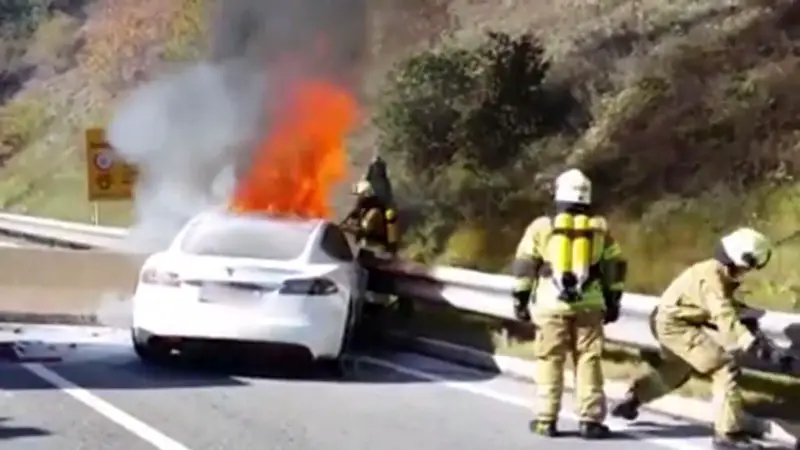
The issue of lithium-ion batteries is not new to most of you. If you are dealing with your own fire or assisting someone else, do not under any circumstances try and open the battery or touch any of the high voltage parts. These are the areas most likely to absorb heat and then cause you serious injury. Electric vehicle owners and in fact all drivers should carry an up to date high-volume fire extinguisher with them.
While more and more products are being manufactured with lithium-ion batteries, their use in electric cars and other vehicles may currently be of the most concern to the fire service. There have been cases of Tesla vehicle crashing however some of the fires are still under investigation because the vehicles appear to have combusted for no obvious reason. There is always a small risk of overheating with the types of batteries that Tesla and other vehicles use, but the unexplained fires are worrisome.
It is worth noting that electric vehicles are considered statistically no more likely to burst into flames than gas-powered cars. And they might be statistically safer as their sample sizes are dwarfed by internal-combustion (ICE) cars.
Lithium-ion explained
Lithium-ion is a lithium-salt-based solution and not lithium metal per se. Specifically, the Tesla batteries are battery cells that are separately encased and have an ethyl-glycol (anti-freeze) coolant that independently cools each cell. The cooling system is designed so that, under normal operating conditions, if one cell would go into thermal runaway, it would not begin a chain of thermal reactions from one cell to another.
Here are some guidelines for firefighter safety not only for vehicles with lithium-ion batteries but with any fire in an alternative-fueled vehicle.
- Wear full PPE and SCBA.
- Identify the type of vehicle involved — standard vehicle, EV, HEV, HF, etc.
- Use a thermal imaging camera to help with the 360 size-up.
- Establish an appropriate incident command structure.
- Establish tactical priorities (fire, extrication, victim care).
- Stabilize the vehicle.
- Power down, if possible.
- Secure a large, continuous and sustainable water supply — one or more fire hydrants or multiple water tenders.
- Use a large volume of water such as a master stream, 2 ½-inch or multiple 1 ¾-inch fire lines to suppress and cool the fire and the battery.
- Consider that this could be a combined fire, extrication and hazmat incident.
- Have sufficient fire personnel and apparatus on the scene for an extended operation to monitor the battery’s heat or possible re-ignition.
- When turning the vehicle over to a wrecker or towing company, brief their personnel on the hazards.
- If possible, follow the wrecker to the storage area, and place the battery-powered vehicle in a space away from other vehicles, buildings or combustibles.
Despite all these fires the EV remains to be the safer cars, the drivetrain of an EV is far simpler than what you’d find in an internal-combustion car: a large lithium-ion battery pack, made up of smaller cells sends power to one or more electric motors to move the wheels.
Contrast that with the hundreds of millions of petrol vehicles on the road today. The internal-combustion engine requires a tank filled with an extremely volatile, flammable liquid; that liquid is then pumped under great pressure to an engine where, typically, it’s mixed with air, sprayed into combustion chambers, ignited, and exploded, over and over and over again.
The energy from the fuel is transformed from potential power to kinetic power, with the up-down movement of the cylinders mechanically converted from linear motion to rotational motion, routed to the wheels through several shafts and a transmission packed with gears.
If you experience a fire or witness one, call the experts straight away and don’t ever risk your life for your car.




